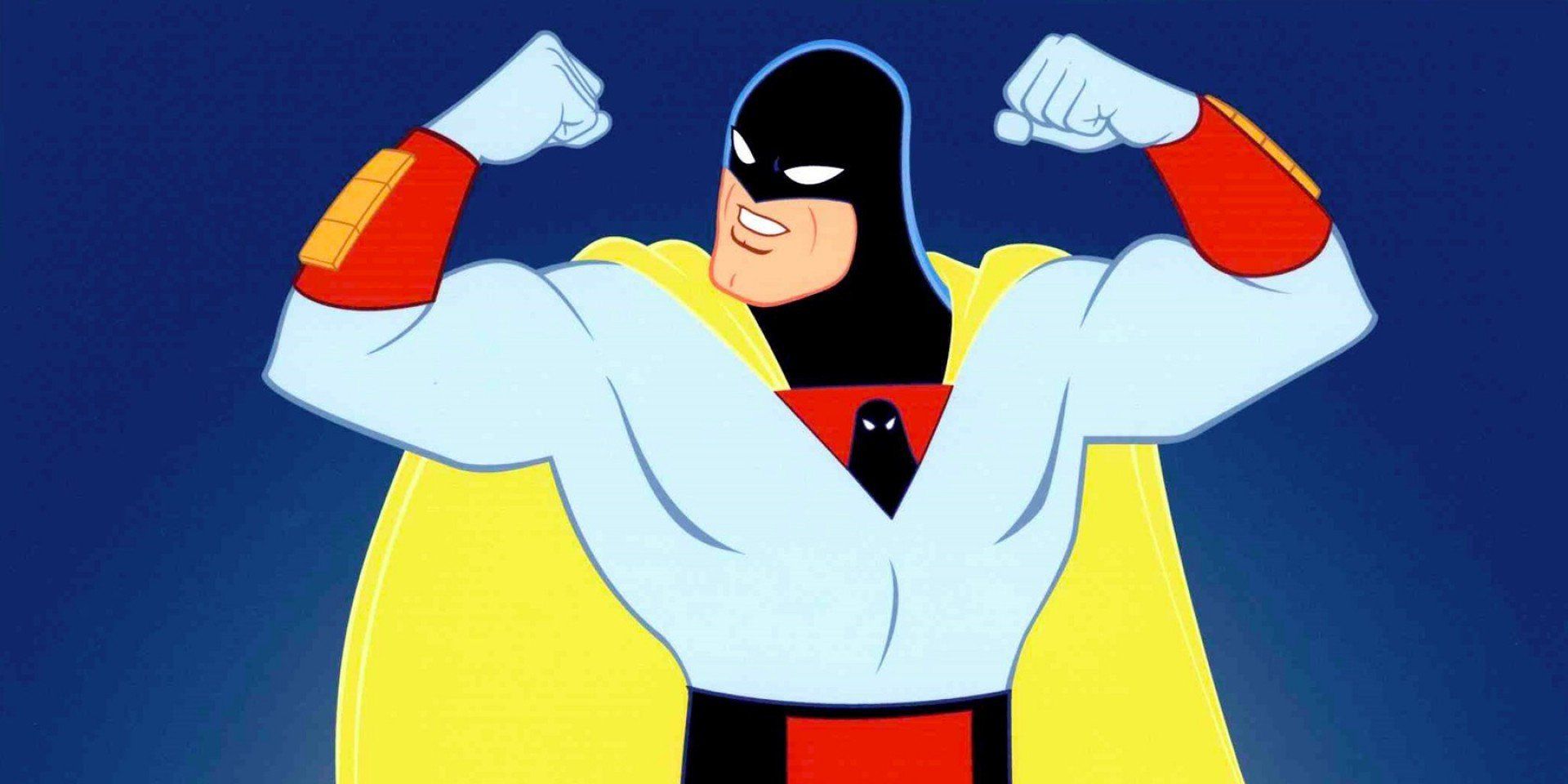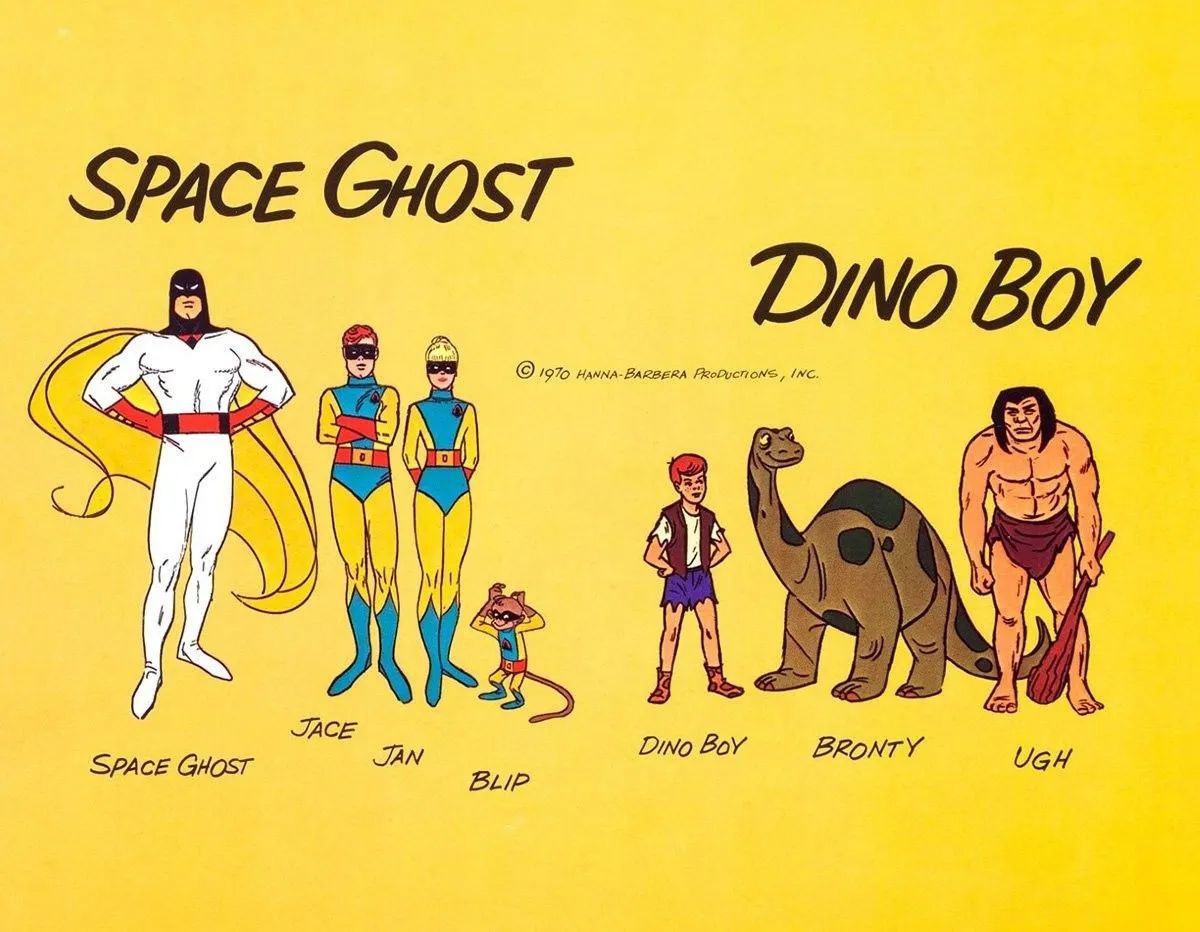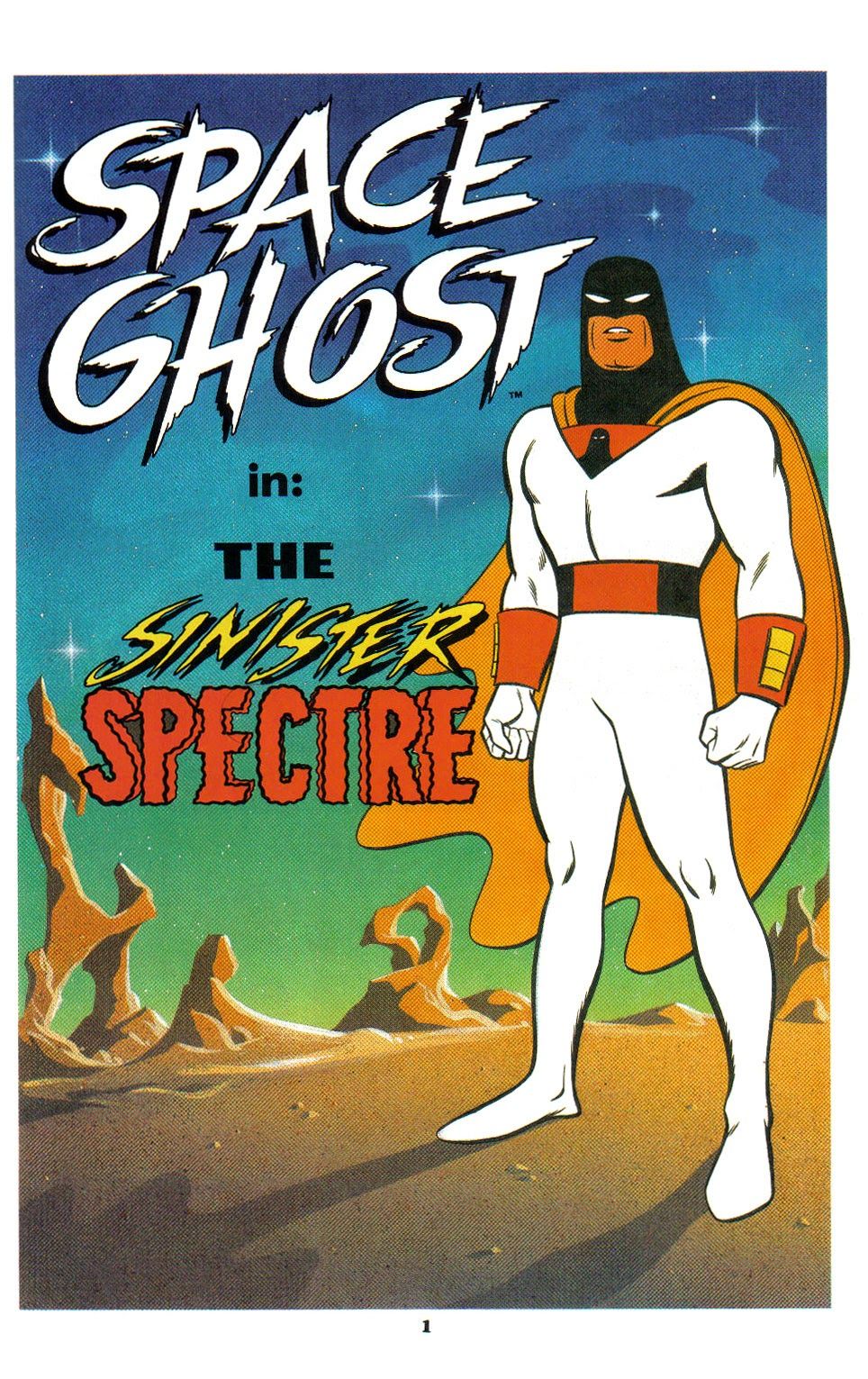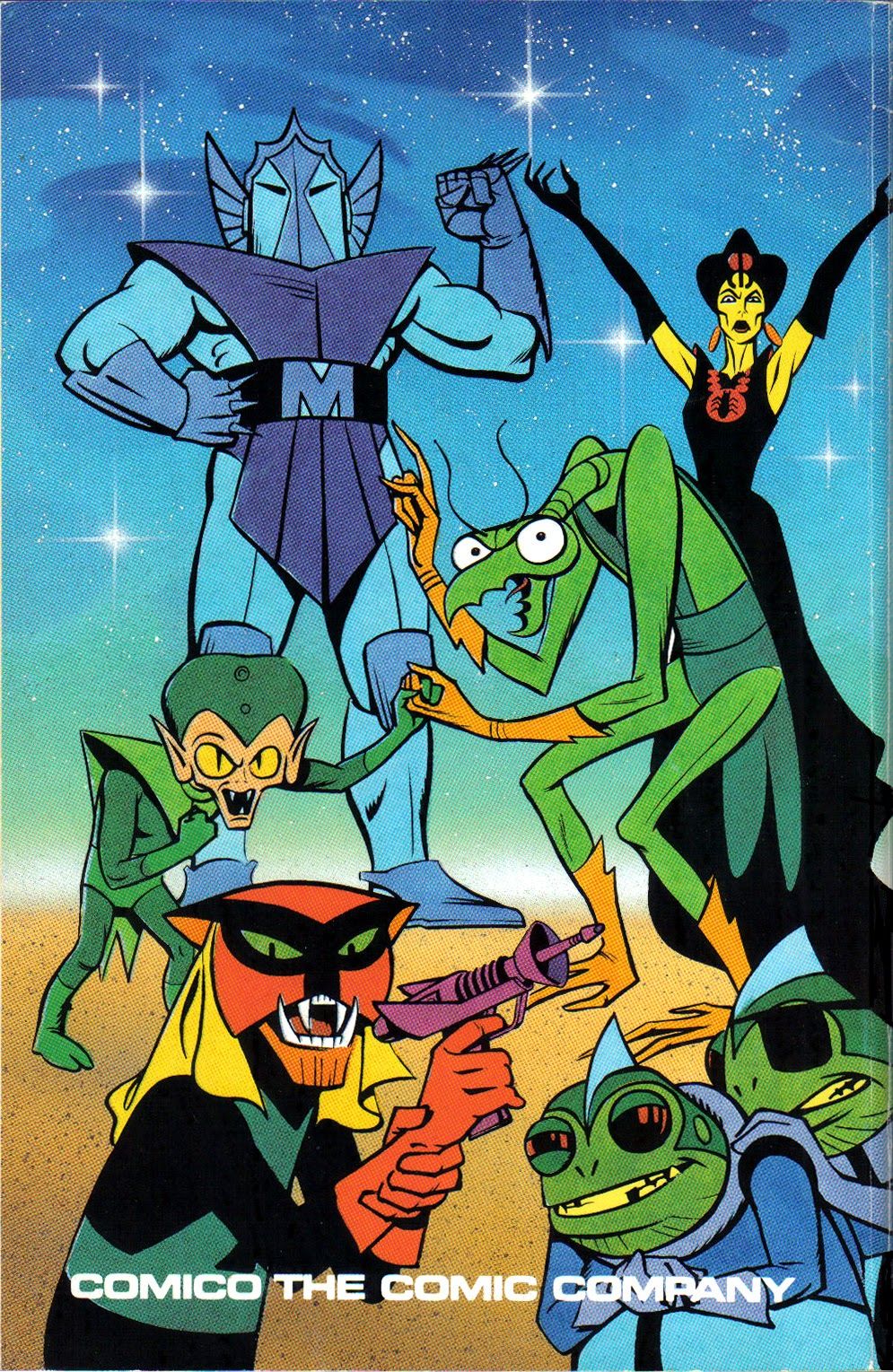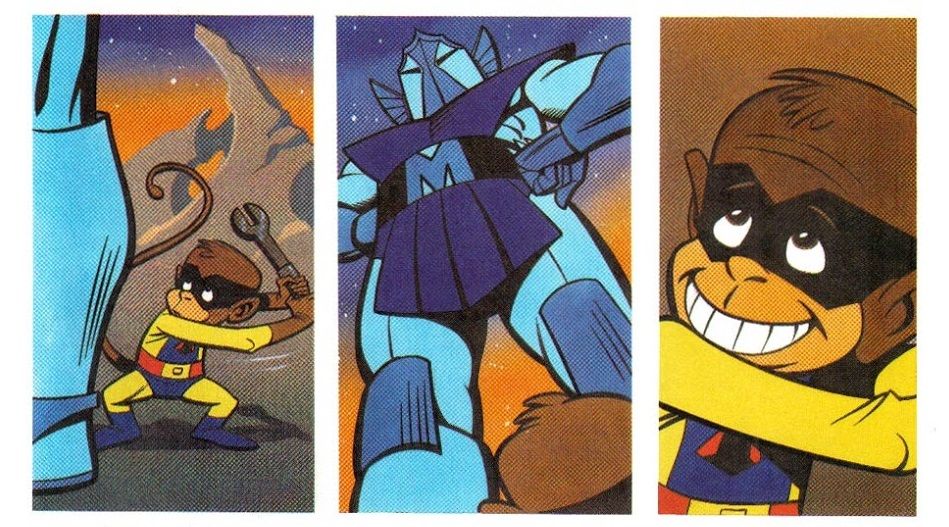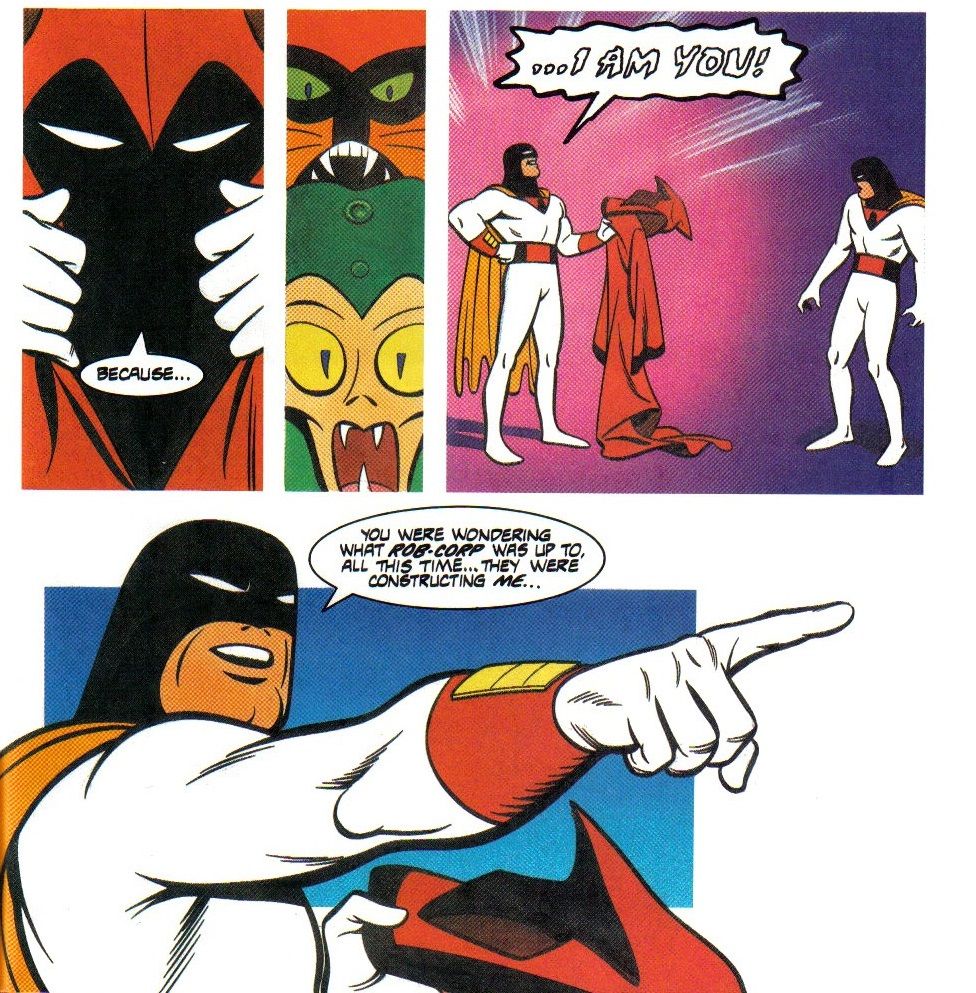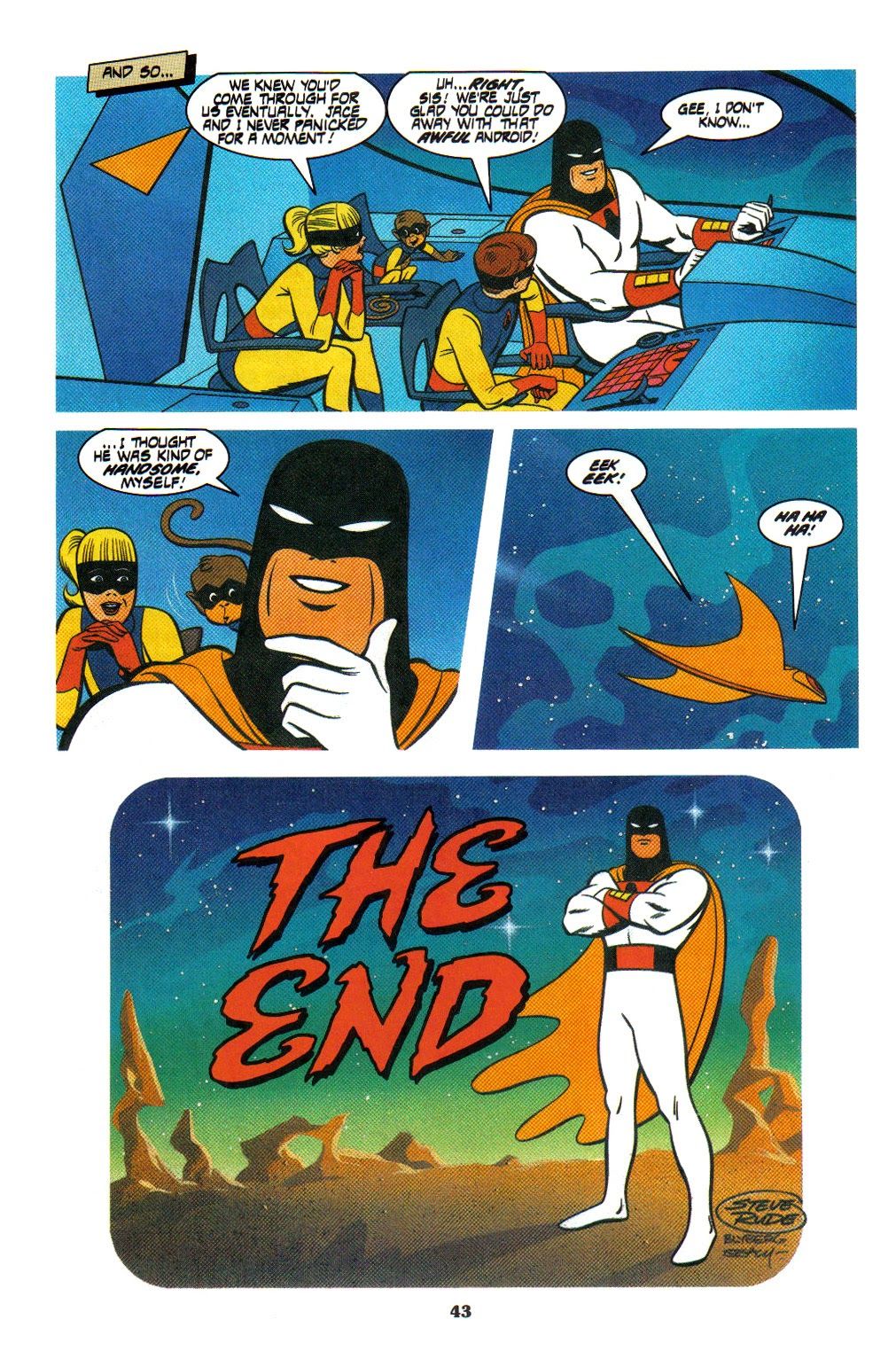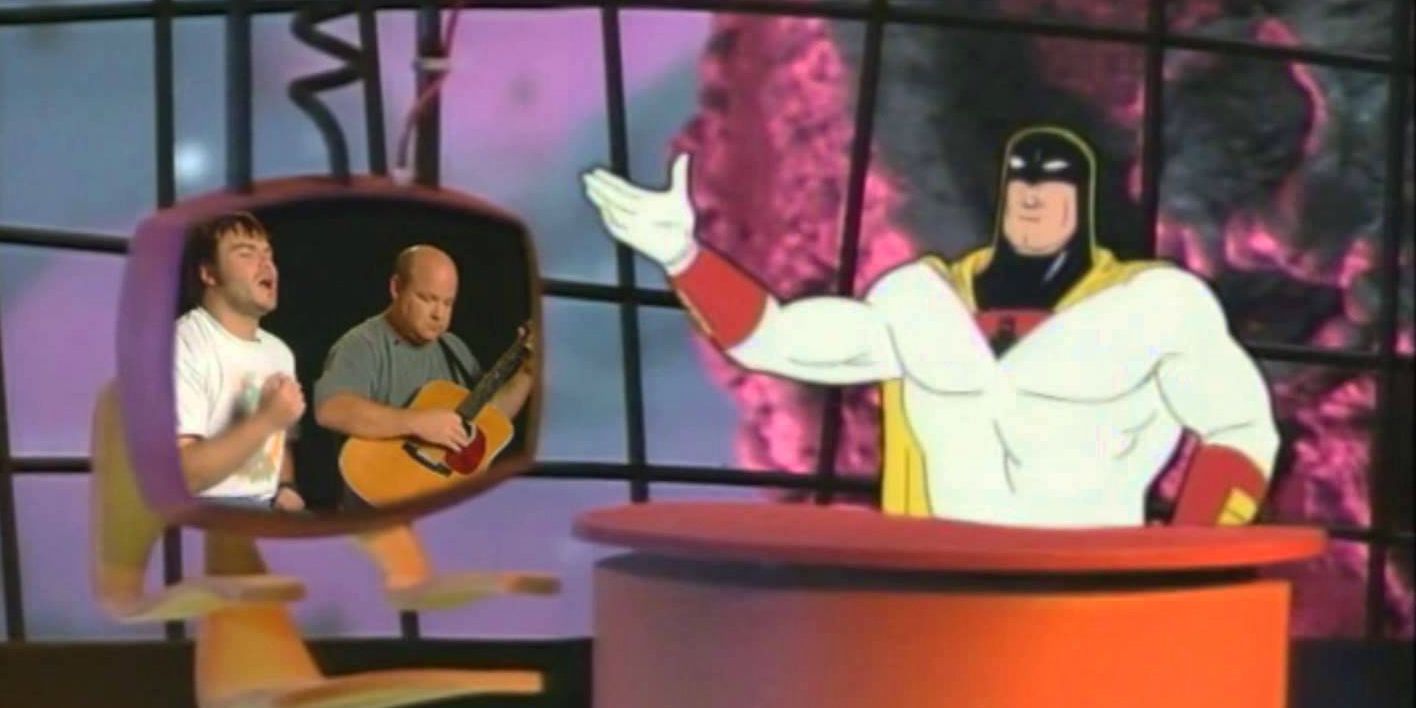Welcome to Adventure(s) Time's 149th installment, a look at animated heroes of the past. This week, a hero for the Baby Boom generation who received a nostalgic tribute comic in the '80s that was oddly ahead of the times. And if you have any suggestions for the future, let me hear them. Just contact me on Twitter.
Debuting in September 1966 on the Saturday morning cartoon series Space Ghost and Dino Boy, Space Ghost joined the hot trend of TV superheroes as an intergalactic crime fighter, hailing from the mysterious Ghost Planet. Space Ghost isn't literally a ghost, as far as we know, but he possesses a belt that turns him invisible, which is apparently close enough to earn him the name. (As for Dino Boy, he's an unrelated Alex Toth creation -- a modern-day kid who lands in a South American valley where dinosaurs still roam.)
Space Ghost is aided by teen sidekicks Jan and Jayce, and their pet monkey, Blip; it's difficult to imagine a self-respecting Hanna-Barbera hero without an animal sidekick. And even though Space Ghost has the ability to fly through space unharmed, he cruises around the cosmos in his sleek Phantom Cruiser craft.
SPACE GHOST'S SURPRISING INFLUENCE
The show didn't care too much about providing an origin for the hero, or even much of a personality, but the character design from legendary comics artist Alex Toth captured the imagination of young viewers. Toth's precise linework also inspired a new generation of artists. Steve Rude's design for a more adult intergalactic hero, Nexus, was inspired by Toth's Space Ghost work. Bruce Timm has also cited Space Ghost as an influence on his Batman: The Animated Series designs.
The straightforward plots and limited animation of Space Ghost and Dino Boy likely wouldn't withstand scrutiny from today's audiences, but the imaginative array of villains and charming voice acting from Gary Owens (famous as the baritone announcer for Rowan & Martin's Laugh-In) was enough for Space Ghost to earn a cult following. The series remained in syndication during the 1970s, and following the success of Star Wars, Hanna-Barbera was motivated to revive the hero again in the early 1980s.
NBC's Space Stars anthology series exploited the revived science fiction fad, allowing Space Ghost to star in 22 new installments. Owens returned to voice Space Ghost, some new villains were introduced and the Phantom Cruiser was redesigned to give it a look similar to the spacecraft seen in Star Wars. The revival episodes didn't have the impact of the originals, but this wouldn't be Space Ghost's final appearance in the 1980s.
REVIVED FOR THE 1980s, WITH A PRESTIGE COMIC
December 1987's Space Ghost was a one-shot special from indie publisher Comico, spearheaded by Nexus artist Steve Rude, a diehard Toth fan. He co-wrote the story with writer Mark Evanier, while animation historian (and lead layout artist on the '80s Space Ghost revival cartoon) Darrell McNeil received a credit for plot assistance. Rude penciled the comic, with Willie Blyberg providing inks. Rounding out the impressive creative team was Ken Steacy, whose painted colors mimicked the look of animation cels.
It's clear Comico's Space Ghost was intended as a love letter to the original show. The comic opens with a text piece from Rude, extolling his lifelong admiration of the hero. The first page of art has Rude duplicating the original cartoon's title screens (and Steacy showing off some of his airbrushing skills), as Space Ghost poses dramatically next to the story's title, "The Sinister Spectre."
BRING ON THE BAD GUYS
On the prison planet of Gaolworld, we're reintroduced to evil space mantis Zorak, who dreams of revenge against Space Ghost. A mysterious cloaked figure appears, providing Zorak with one of Space Ghost's power bands and instigating a massive prison break. It's no surprise that Zorak's fellow inmates also happen to be Toth creations who faced Space Ghost in the 1960s.
Meanwhile, Jan and Jayce (spelled "Jace" throughout the comic) are enjoying a beach vacation, lamenting that the overworked Space Ghost can't join them. The hero abruptly summons them back to the Ghost Planet (his vaguely defined home world that likely doesn't house a single ghost) to monitor emergency broadcasts while he's away dealing with the villainous Rob-Corp. Fans of the show recognize this as a reference to the episode "Attack of the Saucer Crab."
This is all a part of the scheme by the mystery villain, who soon taunts Space Ghost via a holographic projection, boasting that he knows the hero's every thought, and possesses all of his powers. As Space Ghost ponders why this villain -- the titular Sinister Spectre -- seems so familiar, his sidekicks are ambushed by another revived foe with a memorable design, Metallus. Blip the Monkey does his best to help out, in an amusing sequence that displays every classic character is going to get their moment, even the pet sidekick.
Actually, it's Blip who utilizes his invisibility belt and, as a "ghost," pits the rogue's gallery against one another, drawing their attention away from the every-villain-gets-his-shot gauntlet Space Ghost is supposed to be running through. Another clever element is Zorak's adamancy that only he can kill Space Ghost, so he's humoring his fellow villains with all of this gauntlet stuff… and occasionally getting into trouble himself when one gets too close to killing the hero.
WHO IS THE SINISTER SPECTRE?
Having finished the gauntlet, a weary Space Ghost faces the villainous Spectre, who reveals himself to be, in fact, Space Ghost! Was that earlier line about Space Ghost overtaxing himself sly foreshadowing, a hint that the stoic hero has finally cracked? Have the creators suckered the audience into buying a cynical reimagining of Space Ghost, dirtying him up for the grim and gritty 1980s? Well, no, actually. As it turns out, the "evil" Space Ghost is merely Rob-Corp's android duplicate.
With the aid of his sidekicks, Space Ghost blasts the android off a cliff, where he conveniently lands next to Zorak. The villain believes his greatest wish has been fulfilled, as he blasts "Space Ghost" into nothingness.
Zorak's joy is soon deflated, when he's rounded up with the rest of the Toth baddies by the heroes and returned to his space prison. We close with not only Rude's version of the show's "The End" card, but a meager joke worthy of the show's unabashed corniness.
COMICO'S SPACE GHOST PREDICTED FUTURE TRENDS
The story is slightly more sophisticated than something viewers would've experienced on the '60s show, but still feels as if it belongs to that world. Evanier and Rude craft the comic with affection for the material, avoiding any of the trendy attempts to revamp a classic concept. This is clearly not a "mature" or "realistic" version of Space Ghost. More like a lost episode, packed with all of the villains that fans would want to see rendered by Steve Rude.
Pitting a hero against his established rogue's gallery has become a ploy for boosting sales in more recent years, perhaps utilized most famously in Jeph Loeb and Jim Lee's "Hush" storyline for Batman. While these arcs often feel contrived, "The Sinister Spectre" delivers on its fan service while also making an effort to tell a clear story. There's a little bit of misdirection, some fun at Zorak's expense, and situations that allow each protagonist to have their hero moment.
Another element that hints at the future is the comic's use of animation-inspired coloring techniques. The production values of this comic are fantastic, and predate Dreamwave and Udon's attempts at mimicking anime color design in comics by over ten years. Given the advances in digital coloring and printing techniques since the 1980s, it's a shame that comics produced by major publishers today don't look as good as Space Ghost.
For generations of readers who really only know Space Ghost from his parody talk show in the '90s (a forerunner for Cartoon Network's irreverent Adult Swim lineup), it's difficult to understand why so many professionals took the hero this seriously. Yet, the same impulse continued into the next generation, as 1980s properties like Masters of the Universe and Transformers received their own earnest revamps from creators who maintained their childhood affection for the heroes.
While Space Ghost might've previously been a licensed book crafted by an indifferent creative team, Comico's one-shot was an early indicator that previously dismissed properties can contain real value. Evanier, an accomplished television writer, and Rude, considered one of comics' best artists, likely could've worked on any property they wished. But what they wanted was Space Ghost. Years later, creators like Alex Ross will dedicate their energies to revivals of long-abandoned properties like Battle of the Planets. Nostalgia had previously been a niche market within comics, but Comico's Space Ghost has become oddly prescient in the years since its release.

